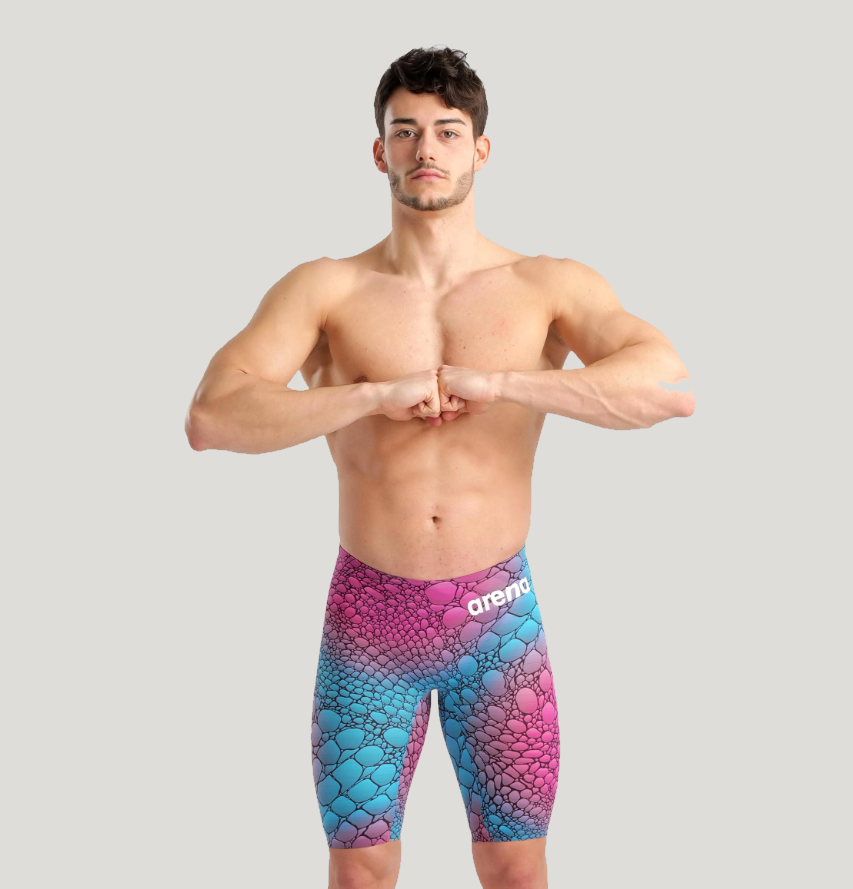Why You Should Avoid The Barbell Bench Press
What is the Barbell Bench Press?
The barbell bench press is likely the most popular exercise after bicep curls, who doesn’t want pecs like Dwayne Johnson?! It’s a horizontal pushing movement pattern, even though it’s vertical, that makes up 1 of 3 movements in Powerlifting. Lowering the bar to the chest and back up. Dead simple.
It’s much more advanced than people think however and it’s rather dangerous even for the advanced lifters out there. A loaded barbell above your face, neck and chest while under fatigue, not the best place to be. Social media is full of examples of what can do wrong, but thankfully this doesn’t happen that much.
Is the Bench Press hurting your swimming performance?
The first reason why swimmers may want to avoid the barbell Bench Press is there is a huge demand in swimming for total body coordination to maximise the performance of the athlete in the water. The barbell bench press is performed from a supine position lying on a bench, there are some aspects of coordination such as bracing the midsection, but they are limited in their potential transfer to swimming. Furthermore, a common cue for the lifter is to ‘retract the shoulder blades’ during the full lift. This is a terrible concept for swimming athletes as they need to train themselves to coordinate their Scapulae (shoulder blades) to move with the Humerus to help avoid problems such as Impingements through secondary mechanisms.
Lying down on a stable surface is great for maximum force production, but it might not be the ideal way to train swimming athletes who may spend up to 20 hours a week in a gravity reduced environment. They need to self-organise and coordinate their bodies, learn body awareness and control more so than producing crazy amounts of force during a pushing movement. Just because an athlete isn’t benching, doesn’t mean they aren’t training optimally, the opposite is more likely true. Most athletes do not need the Barbell Bench Press, especially overhead athletes.
Another common aspect to consider is posture. First of all, is there such a thing as ‘good posture’? There might be a ‘bad posture’ but what even is good posture? Is good posture for one athlete good for another? Common thoughts are Bench Press will cause rounded shoulders and a kyphotic spine, that may be true but only if there is a poor push to pull ratio and therefore the lifter is at fault, not the Bench Press.
Alternative training methods.
A better pushing movement pattern for swimming athletes is the good old Push Up, here the athlete can learn to coordinate themselves to maintain a solid position throughout the movement from head to toe.
Key questions during the Push Up include:
1. Is the head in a good position?
2. Are they able to move their Scapulae across the rib cage?
3. Can they control their Lumbo-Pelvic region and avoid an anterior pelvic tilt?
Also, the coach can manipulate the position of the athlete at the top to create even further scapula upward rotation if the athlete struggles to achieve a streamline position or has poor scapular kinematics. A level of coordination demand that simply isn’t seen in the barbell Bench Press.
Another alternative to the Barbell Bench Press is the Landmine Press. This movement is similar to the Push Up in that it allows for much more scapula upward rotation and as it’s often performed unilaterally (one arm at a time) the athlete and coach can assess if one side has any force production or movement deficiencies.
In summary, if you’re general population then there’s no reason you can’t work up to the barbell Bench Press and if you’re a Powerlifter it’s essential, but there are huge limitations for overhead athletes during this movement and much better alternatives exist that better cater for the demands of overhead sports be it swimming, baseball, tennis etc. But, like in most things, it depends on the situation and the athlete in front of you.



